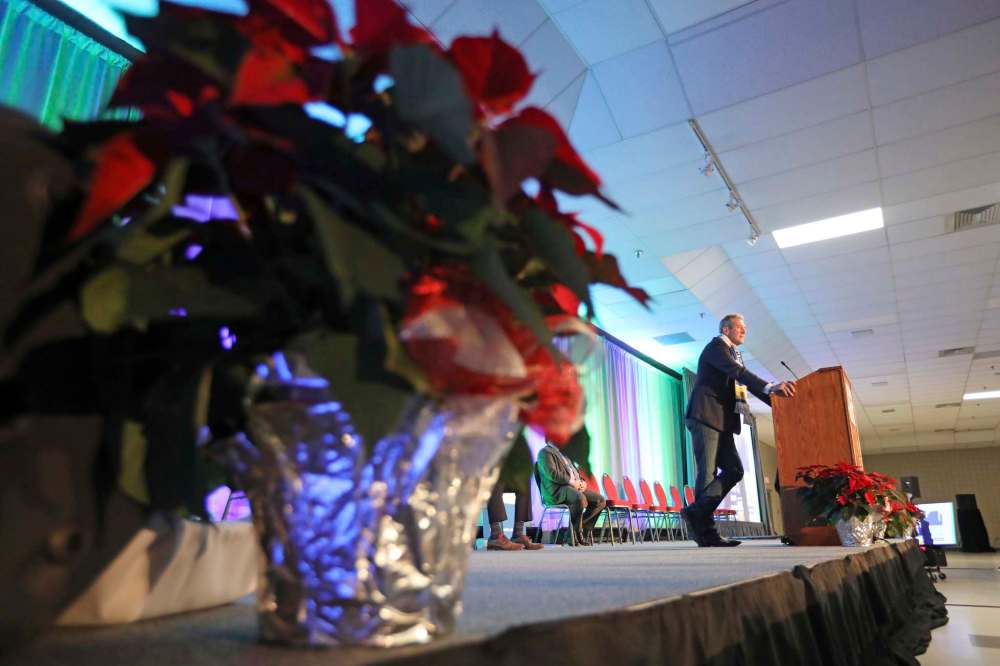Disappointment is in the details after post-austerity Pallister makes it… drizzle
Read this article for free:
or
Already have an account? Log in here »
To continue reading, please subscribe:
Monthly Digital Subscription
$0 for the first 4 weeks*
- Enjoy unlimited reading on winnipegfreepress.com
- Read the E-Edition, our digital replica newspaper
- Access News Break, our award-winning app
- Play interactive puzzles
*No charge for 4 weeks then price increases to the regular rate of $19.00 plus GST every four weeks. Offer available to new and qualified returning subscribers only. Cancel any time.
Monthly Digital Subscription
$4.75/week*
- Enjoy unlimited reading on winnipegfreepress.com
- Read the E-Edition, our digital replica newspaper
- Access News Break, our award-winning app
- Play interactive puzzles
*Billed as $19 plus GST every four weeks. Cancel any time.
To continue reading, please subscribe:
Add Free Press access to your Brandon Sun subscription for only an additional
$1 for the first 4 weeks*
*Your next subscription payment will increase by $1.00 and you will be charged $16.99 plus GST for four weeks. After four weeks, your payment will increase to $23.99 plus GST every four weeks.
Read unlimited articles for free today:
or
Already have an account? Log in here »
Hey there, time traveller!
This article was published 25/11/2019 (2209 days ago), so information in it may no longer be current.
Premier Brian Pallister was in a giving mood Monday when he arrived for his annual pre-Christmas visit to the Association of Manitoba Municipalities (AMM) conference in Brandon.
After more than three years of frozen operating grants and cuts to infrastructure funding, mayors and reeves had reason to be optimistic that the premier would bring them something more than the lump of coal they have received in the past. Particularly when it appears the provincial budget will be in surplus as early as next year.
Local government leaders know how the game works. After years of downloading costs to local government as he battled the provincial deficit, it looked like it was time for Pallister to share a “fiscal dividend” with mayors and reeves.
What Pallister actually delivered was hardly insignificant, although it represents a mere pittance when compared to what he has cut from support to local governments over his first term in office.

A news release accompanying his speech to AMM delegates trumpeted a “more than $400 million” investment in “emergency response and damage prevention measures” to help all communities deal with all forms of natural disaster. At first blush, that’s a pretty significant amount.
However, $380-million of that lofty number was previously announced investment in a new public safety communications system so that the provincial and municipal governments and emergency services can talk to each other in the midst of a major forest fire, storm or flood.
Pallister did relieve municipalities of the cost of operating this new emergency communication system, estimated at about $20 million a year. That is certainly positive news for cash-strapped municipalities.
Pallister also announced $45 million in one-time capital investments in “damage prevention and climate resiliency measures.” These funds are being repurposed from money the province was supposed to spend next year on the Lake Manitoba Outlet Channel, which has been halted by federal regulators after the Tory government bungled its consultations with Indigenous people.

One-third of that money will go to local government inside the capital region, a third to those communities outside the capital region and the final third to provincial priorities. There was no clear description of what kinds of projects would be covered by “damage prevention” or “climate resiliency” measures, or whether this money could be used in any way to help communities defend themselves against possible spring floods.
It’s a classic Pallister strategy; top a news release with huge number and then reveal slowly that it’s a lot less than was billed in the news release.
Strip away the hyperbole and you actually have $20 million of new money, $45 million of repurposed money and $380 million of previously announced money. Nothing to sneeze about, but still a triumph of marketing over generosity.
More importantly, it doesn’t help municipalities deal with the significant reduction in provincial support for both operating and infrastructure costs that began in 2016, when most grants to local government were either frozen or cut by the Pallister government.
It also reminds AMM — which includes delegates from both large urban centres and small rural hamlets — that it simply has no leverage with this government.
Strip away the hyperbole and you actually have $20 million of new money, $45 million of repurposed money and $380 million of previously announced money. Nothing to sneeze about, but still a triumph of marketing over generosity.
Last year at this time, AMM delegates passed a resolution asking the province to reinstate the municipal road and bridge programs that many rural municipalities relied on to keep critical transportation infrastructure operational. The province did promise to reinstate it but when the budget came out, two programs had been merged into a single stream with most communities receiving hundreds of thousands of dollars less than before.
The reality is — notwithstanding the robust numbers he throws around in news releases — Pallister is no less austerity-minded about support to municipalities than he has ever been.
Take the recent speech from the throne as an example. There was a pledge to increase infrastructure investments but it focused mostly on hospitals, schools, universities and Crown corporations. Municipal infrastructure was nowhere to be seen in that part of the speech.
The Pallister government did promise that the 2020 budget will include a small increase in funding for highways and an as-yet undefined dedicated fund for infrastructure projects that will stimulate private-sector investment and job creation. Nobody has any idea what that will do; it’s unlikely to help municipalities deal with their current cash crunch.
Pallister clearly understands that decisions his government has made to combat the provincial deficit have done little more than pass on additional costs and less grant support to municipalities, school divisions and post-secondary educational institutions.

The premier, no doubt, believes this tough-love approach will provide a healthy serving of necessity that will drive invention to find more cost-effective ways of delivering public services.
Although there may be some truth in that, what we know for sure is that Manitoba taxpayers are paying about the same into the system even as the deliverables are shrinking each and every year. In that context, Pallister’s strategy is less about making government more cost effective than it is giving taxpayers lower expectations about what they are getting for their money.
Like school boards and provincial civil servants, local governments have done more than their fare share of belt-tightening to help the province balance its budget. But even with that budget on the verge of surplus, there is no indication that Pallister will start to restore that which he has cut.
When it comes to this premier, ignore the headline on the news release and go straight to the details of what he is announcing. There, you will find out that the austerity Pallister used to conquer the provincial deficit is very much in effect.
dan.lett@freepress.mb.ca

Born and raised in and around Toronto, Dan Lett came to Winnipeg in 1986, less than a year out of journalism school with a lifelong dream to be a newspaper reporter.
Our newsroom depends on a growing audience of readers to power our journalism. If you are not a paid reader, please consider becoming a subscriber.
Our newsroom depends on its audience of readers to power our journalism. Thank you for your support.










